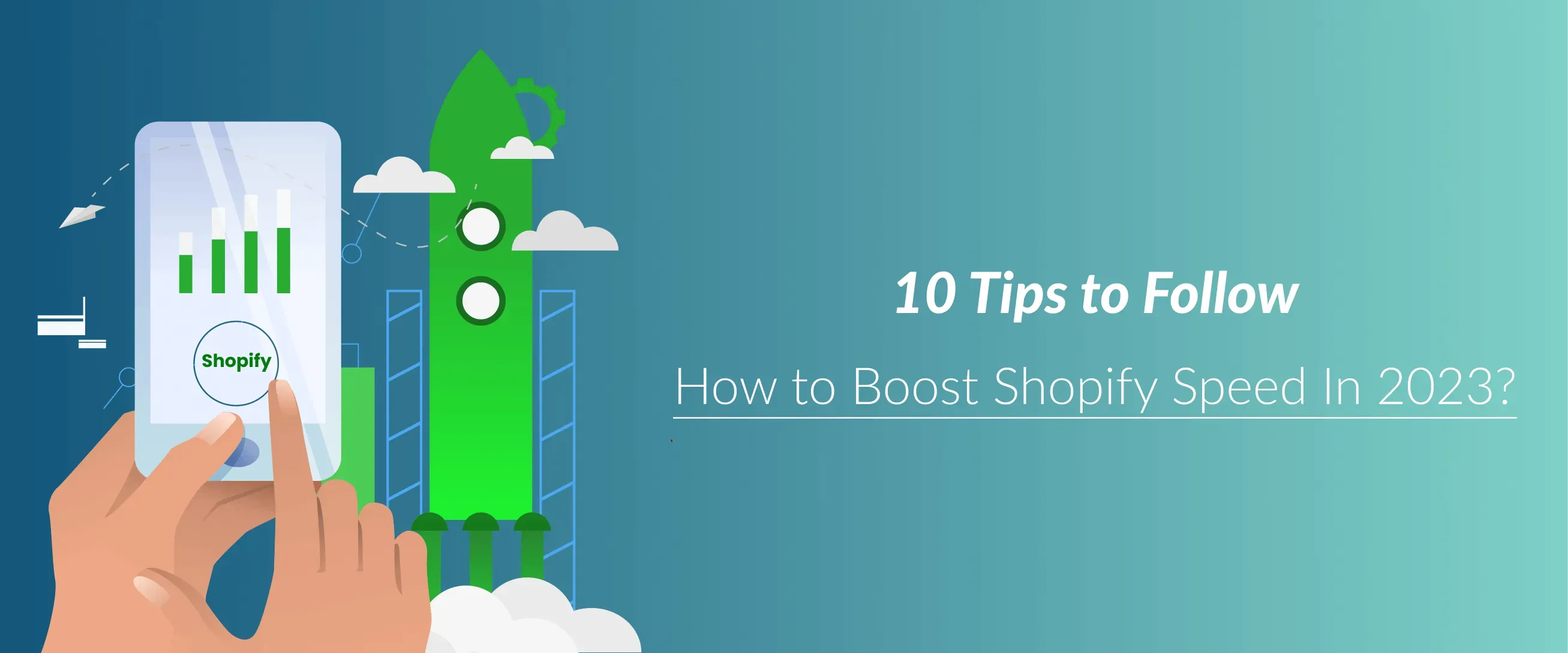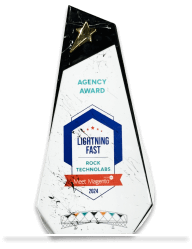How to Boost Shopify Speed In 2023? 10 Tips to Follow

Are you interested in finding ways to maximize the number of sales made through your Shopify online store by improving its speed like a hired certified Shopify developer? We’ve compiled a list of tried-and-true recommendations for enhancing the functionality and speed of your Shopify website here in this blog post.
Although the adage “Slow and Steady Wins the Race” is familiar to all of us, the opposite is true regarding websites: websites that load slowly tend to attract less visitors. For example, Google reports that 53 percent of people who use the internet will leave mobile websites (including online shopping) that take more than three seconds to load. Therefore, rapid page and site performance are essential to success in online business.
You invested in Shopify development, and now you’re searching for ways to make it load faster to reduce the likelihood of a high bounce rate and low user engagement so that you can experience potential sales. Here are some suggestions that can help you significantly boost the speed and performance of your Shopify site without sacrificing any of the functionality. Let’s have a peek, shall we?
How to Boost Shopify Speed For Getting Better Conversions & More Sales
1. Opt for a Theme That Is Both Quick and Responsive
Because the performance of your Shopify online store will largely be determined by the theme you select, it is in your best interest to always opt for a quick and responsive theme while setting up your business. After you have decided on a theme, it is essential to remember to maintain it updated so that your website can stay active.
According to shopify development company, it is advised that before installing a theme, you run the theme’s preview page via Google PageSpeed Insights and see the ideas to make that page faster, which will result in an improved user experience. This should be done before downloading the theme.
2. Use a Hosting Service That Is Both Quick and Reliable
During times of heavy traffic and a high volume of transactions, the performance of your e-commerce website can be significantly impacted by the hosting shopify development services and infrastructure you use. According to ITIC, 86% of enterprises believe one hour of downtime costs $300K+, and 34% of organizations claim one hour of downtime tops $1 million.
As per shopify web development company all that is required to take your Shopify store to the next level is hosting that is both faster and more reliable—moving up to a better Shopify plan can potentially half your loading time and perhaps see a minor gain in average order value.
3. Make use of Google’s PageSpeed Insights instrument.
If you Hire Certified Shopify developers, you’ll know that PageSpeed Insights allows you to perform performance analysis on mobile and desktop devices. PageSpeed Insights tool by Google generates PageSpeed score and PageSpeed tips for your pages to make your website quicker. In addition, the tool displays the essential components for mobile and desktop independently, such as optimizing pictures, minimizing CSS and JavaScript, removing render-blocking JavaScript and CSS, avoiding redirects to destination pages, and compressing content using Gzip.
4. Leverage Google Tag Manager
People typically include different tracking codes for Google Analytics, AdWords conversions, goals, and remarketing tags, among other things, which slows down the performance of the website as a whole. Utilizing Google Tag Manager allows you to store all your tags in a single location.
It makes one request to load all of the external scripts (tags) that are utilized by your Shopify theme. Additionally, it loads JavaScript files asynchronously so that other website components do not need to wait for them to complete loading before moving on.
5. Improve your overall performance by using AMP
Your Shopify store needs to be optimized for people accessing it from mobile devices in light of the exploding demand for mobile phones. As discussed before, over 50% of buyers buy via smartphones; hence, ensuring your website is mobile-friendly and loads swiftly become crucial.
Accelerated Mobile Pages (AMPs) are simple to create in Shopify. These pages load in a matter of seconds and enhance the user experience when combined with Fire AMP or RocketAmp Apps. In addition to that, you can also design these AMP sites using the Shopify API that you have created.
6. Take Control of the Number of Apps That Have Been Installed
Most applications acquired from Shopify’s app store add JavaScript and CSS files to your business. However, the most significant problem is that even when you aren’t using the app, JavaScript and CSS files are still being processed in the background, slows down your Shopify website. Thus, you should browse your Shopify store and verify whether there are apps you’re not using that you can get rid of. Taking these steps will result in a dramatic improvement in the performance of your website.
7. Make the image smaller while compressing it.
Shopify allows you to upload images in various formats, including JPEG/JPG, PNG, and GIF. Image compression is an absolute requirement to have a website that loads more quickly. It is essential to ensure that the image quality is not compromised in any way while the image size is compressed and optimized. When all photos have been compressed and optimized, the load time of the Shopify store will immediately become significantly faster.
8. Lazy Load Images
Do you, too, find it excruciating when images take a long time to load? No worries! Lazy loading is here to save you. Your Shopify store will run more efficiently using lazy loading since this feature forces your business to only load the elements of the page that are instantly visible. Lazy loading works by displaying low-quality photos first. It loads nothing that is not “above the fold” on a page, and it does not load itself until the user scrolls farther down the page.
9. Reduce the total number of HTTP requests as much as possible.
Additional web files are loaded into the browser whenever a visitor opens one of your web pages. These different web files can include CSS files, JavaScript, design graphics, and many others. Therefore, reducing the number of HTTP requests made by your website by incorporating and inlining your CSS scripts, minimizing the use of graphics and functional images, transforming images to Base64 code, limiting the number of social buttons, and other optimization strategies can do wonders for your Shopify store.
10. Cut down on the number of redirects and get rid of broken links
Do you want an easy shopping experience for your customers to have on your Shopify website? Please reduce the number of broken links and redirects. An excessive number of redirects and broken links may have caused the performance issue. A disproportionate number of redirects and broken links can negatively influence your website’s speed and SEO rankings. As a result, you should steer clear of redirects that aren’t necessary and fix any links that are broken.
Winding Up!
These were some actionable and tried-and-true best practices for performance optimization in Shopify, and you should follow them. You may significantly improve the speed and performance of your e-commerce website by beginning with these straightforward and practical measures. To that end, are you prepared to take your Shopify store to the next level?
In case of any support just visit our website to boost your online Shopify speed through best practices as we are offering end-to-end & innovative Shopify development services.


